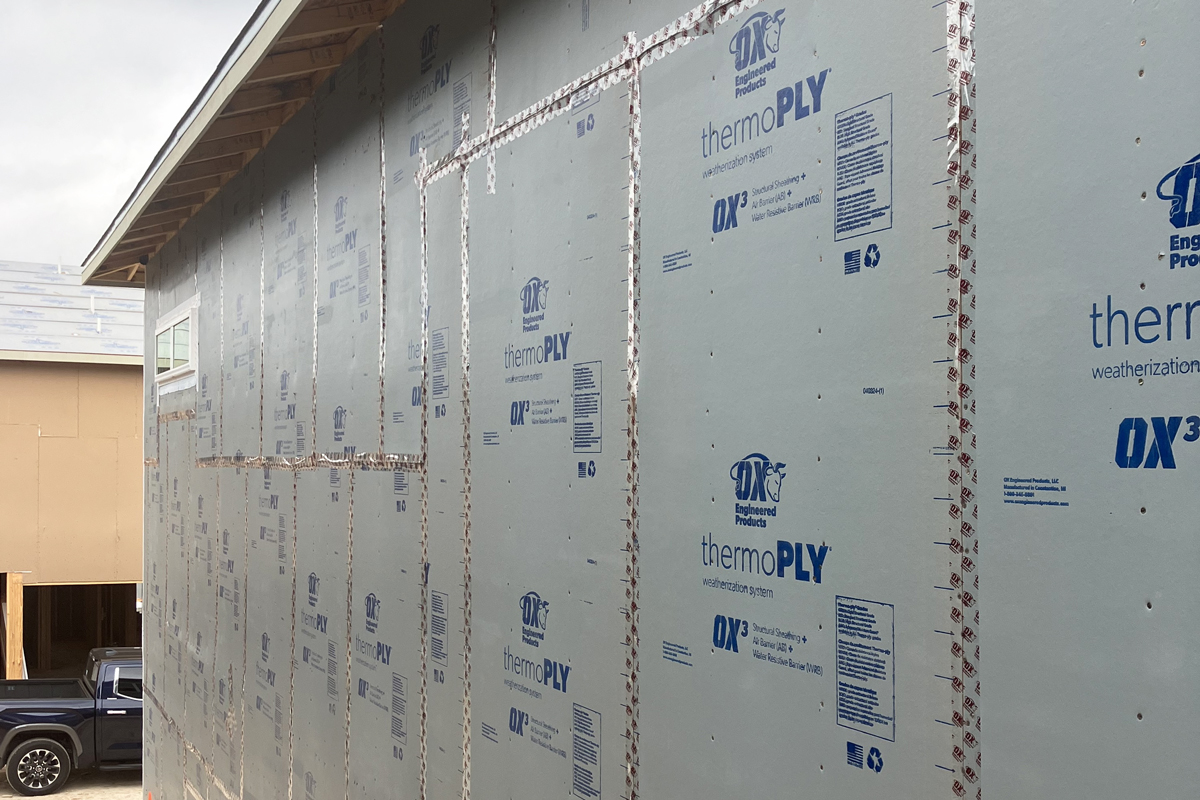When a bustling, overcrowded household began to interfere with a requirement for remote work, a Minnesota homeowner knew that change was needed. Rather than moving into a larger home, a costly and impractical option, homeowner Brad O’Connor envisioned a solution that was both innovative and sustainable.
A backyard office shed.
In the heart of Minnesota, where the winters are long and the need for sustainable, energy efficient spaces is a given, O’Connor’s vision for a new, high-performing detached structure began to take shape.
From the start, he and his team needed to make insulation a top priority. They selected a material that blended structural strength with continuous thermal protection: a combination that would keep the structure energy efficient year-round, no matter the temperature.
OX-IS: Minnesota Tough, Comfort Ready
The project team selected OX-IS structural insulated sheathing from OX Engineered Products for the job. The OX-IS system combines structural sheathing, continuous insulation, an air barrier, and a water-resistant barrier into a single integrated solution, simplifying installation, reducing labor requirements, and improving thermal performance.
“I set out to find the most innovative building products that I could,” said homeowner Brad O’Connor. “New products like OX-IS are reshaping the way buildings are constructed, with a growing focus on efficiency, durability, and sustainability. It really helped us achieve our goals with this project.”
OX-IS delivers superior airtight performance, dramatically reducing air infiltration compared to conventional OSB and house wrap assemblies. Its enhanced air sealing helps lower the energy needed to maintain consistent indoor temperatures, improving overall building efficiency. This can help cut heating and cooling expenses by between 20% and 40%, ultimately driving long-term cost savings for the O’Connors.
With its blend of performance, energy savings, and lasting durability, OX-IS enables builders to meet or exceed energy codes while ensuring long-term comfort and resilience.
“In selecting the right material for this project, I didn’t really need the shear strength of OSB, but OX-IS had that and the added thermal performance that I was looking for. It was the perfect fit,” said O’Connor. “Given that it combined several components in one, we were able to save on time, labor, and materials.”

A Winter–Ready Workspace
After a year of planning and construction, O’Connor completed the new 10×16 office space in February 2025. “I moved my home office into the finished shed in the middle of February. We had frigid temperatures that reached -20ºF, and it held up phenomenally,” said O’Connor.
Thanks to the OX-IS structural continuous insulation, the space stayed warm and comfortable throughout its first Minnesota winter. Upon completion, the office shed provides an additional 160 square feet of cozy, quiet, functional workspace with optimal performance for the O’Connors.


